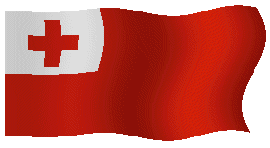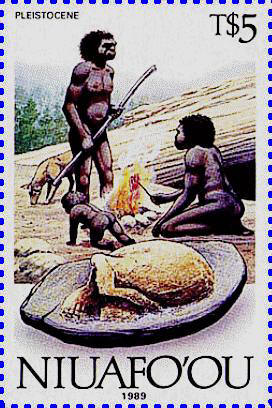NIUAFO'OU
(TONGA)
1989
A pleistocenic family , Homo habilis
issue in 1989.
Issue date: 6.June.1989 -
History of the Earth.
42 s., 'Silurian' (Sigillaria trunk, Equisetales, and Lycopoda),
50 s., 'Cambrian' (Olenoides [top and center], Waptia [top left],
Lancastria? [bottom left], Marella [bottom right]),
57 s., 'Carboniferous' (Equisetales),
1 T$., 'Carboniferous' (Lepidodendron, Meganeura, Ichthyostega, Eusthenopteron),
1.50 T$., 'Jurassic' (Pterodactyl, Stegosaurus),
2 T$., 'Jurassic' (Archaeopteryx, Morganucodon?),
5 T$., 'Pleistocene' (Homo erectus?).
Part of a set.
Sheet 'World Stamp Expo '89 Washington D.C. / XX UPU Congress'
Same set with different values, 6 @ 32 s., 6 @ 42 s., 5 @ 57 s.
Sheet also with 'SPECIMEN' printed on each stamp.
Issue date: 17-th of November.
Scott: 115-121.
Stanley Gibbons: 124-131, 132.
Yvert nš. 120/123
If chronological order was intended, the images on the 42 s. and the 50 s.
stamps should be swapped.
The species on the 1 T$. stamp are Devonian rather than Carboniferous.
The Pterosaur on the 1.50 T$. stamp looks like the Cretaceous Pteranodon.
The Archaeopteryx fossil shown is the Berlin specimen, but shown in the wrong
kind and shape of rock.
![]()
1996

Homo sapiens (cromagnon)
Issue date: 5.September.1996
Mammoth, Machairodus, and moose.
Scott: 190a.
Stanley Gibbons: 247.
Yvert nš. 238/239
![]()

